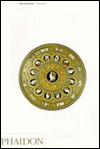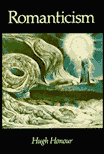|
Recommended Readings
|

Neoclassicism
by David Harlan Irwin
This study of Neoclassicism in the visual arts from 1750 to 1830 embraces all manifestations of the Neoclassical style, taking into consideration both the movement's broad territorial scope and its versatility in every branch of art from the fine to the utilitarian. A discussion of the aftermath of Neoclassicism charts the movement's influence to the 1980s.
More info
Buy now
|

Romanticism
by Hugh Honour
'This stylish and erudite thematic study of the influence Romanticism exerts upon Western culture and particularly the visual arts is the companion volume to Honour's equally valuable New-classicism.... The text is supported by a useful selection of illustrations.... Excellent footnotes and a good index.
More info
Buy now
|
|
      
|
Neoclassical art and Antiquity
Neoclassicism arosed with the new and more scientific interest in classical antiquity in the 18th century. It was given great impetus by new archaeological discoveries; particularly the exploration and excavation of the buried Roman cities of Herculaneum and Pompeii began in 1738 and 1748 respectively. Theorists, like Winckelmann, Mengs and Reynolds, produced writings that were influential in encouraging an interest in Greek antiquities.
...more 
|
|
Neoclassical Architecture
In architecture, neoclassicism was the dominant style in Europe during 1750s-1850s, marked by the imitation of Greco-Roman forms. Classical architectural models were adapted or referenced in a range of architectural forms, including churches, arches, temple, house, terraces, garden monuments and interior designs. Later, Neoclassical architecture became an international style, each country held some distinct characteristic in their style.
...more 
|
|
Delacroix: the Pure Classicist
There are two sides of Delacroix, one classical, the other Romantic. Although he considered himself to be a 'pure classicist', we can find features from both categories in a range of his work. Romantic features being subject not Italianate, the depiction of a dramatic movement, broken colours and free technique, Neoclassical features in composition and the subject matter in later works.
...more 
|
|
|
|
Gericault's Raft of the Medusa
The start of the work was slow and difficult. The difficulty was to choose from the drama of the shipwreck narrative a single, significant, and pictorially effective moment. Gericault looked at scenes of battle, torment and death in the works of the masters, like Michelangelo, Rubens and Gros, for the appropriate feeling and expression to his subjects.
...more 
|
|
© Copyright 1999, 2000, 2001, 2002
|










